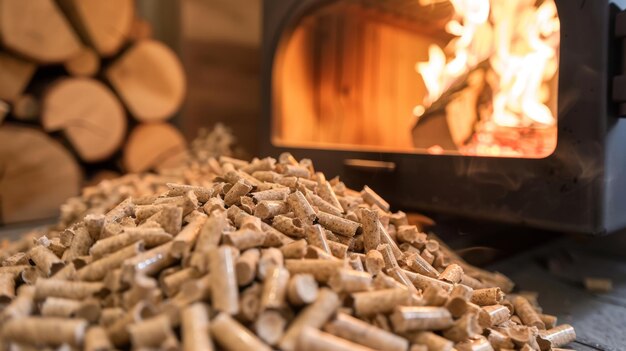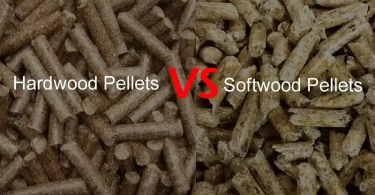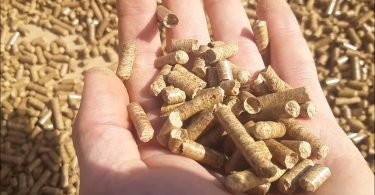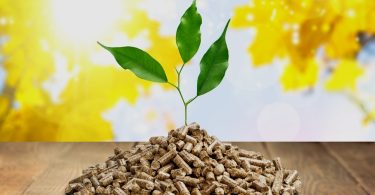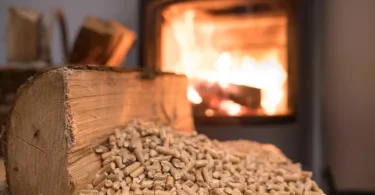- What are Wood Fuel Pellets?
- How are Fuel Pellets Made?
- What are Some Uses of Fuel Pellets?
- 1- Wood Fuel Pellets for Pellet Stove
- 2- Residential Boilers
- 3- Heating Fuel Pellets
- 4- Industrial Use
- 5- Power Generation Using Pellets
- 6- Fuel Pellets for Animal Bedding
- 7- Wood Pellets for Cat Litter
- Why Switch to Wood Fuel Pellets?
- * Cost-Effectiveness
- * Lower Carbon Footprint
- * Easy Storage
- * Good Fire Control
- * Less Smoke
- * Less Carbon-Monoxide Gets Released
- * Better Temperature Control
- * Added Benefits
- Final Considerations
Fuel pellets are considered an energy source of the future: accessible, easy to store and reliable, they pack a lot of energy and enable heating on demand, automated or not. This being said, fuel pellets pack as much as 4.85kWh of energy per kilogram of weight and enable fast and reliable discharge of this energy in the form of heat released during the combustion process. Needless to say, this has enabled fuel pellets or wood pellets, as they are also known, to have multiple applications across both the residential and industrial sector and in many industries. Let’s consider some of those uses.
What are Wood Fuel Pellets?
Wood fuel pellets are small cylinders with a diameter of 5-10 millimeters. They can be anywhere from 2-4 centimeters long, depending on the producer and the machine being used to extrude them. Pellets are a good and reliable source of heat for both residential and industrial application. This is a fuel that has been gaining in popularity in the past several decades, with a clear trend in the European Union of 5% annual growth.
How are Fuel Pellets Made?
Wood fuel pellets are pelletized biomass residues, different wastes from wood processing industry or milled timber. The organic, fibrous materials that are used in the production of wood pellets are brought to the consistency of sawdust which is then extruded by means of rollers in a special machine called pellet extruder or pelletizer. The end product is then cooled down and packed to be shipped to the market.
Read Full Post Here: How are Fuel Pellets Made?
The pellets are packed in plastic bags that protect them from excess moisture and humidity found in the environment. This also makes it very easy to handle, as the bags are 15-18 kilos heavy. The end product is always protected, for as long as the bags are kept intact.
What are Some Uses of Fuel Pellets?
1- Wood Fuel Pellets for Pellet Stove
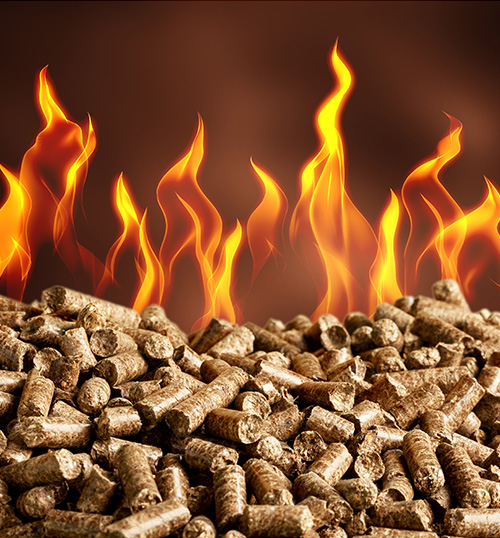
Wood fuel pellets have to be burned in a specific pellet stove. This pellet stove usually has a small storage compartment where the pre-mentioned plastic bags are emptied. From here on, a special mechanism delivers small amounts of pellets to the combustion chamber or the furnace. When it comes to the combustion itself, this is a very efficient and reliable form of combustion.
In part, this is achieved thanks to the pellets’ low moisture content which is not higher than 5-10%. At the same time the introduction of fresh air in multiple stages throughout the combustion process ensures that most of the heat produced by the combustion itself can actually be sent to heat the space. Not only this, but wood fuel pellets can also be used to heat hot residential water.
2- Residential Boilers
This is usually done in residential boilers. As these boilers are usually large in size, they can be used both for the needs of shower and kitchen hot water as well as space heating. This way, one such boiler can have multiple uses leading to savings in both money and space used in your home. This is also a very efficient form of heating that is now also being implemented in residential buildings even in bigger cities. The ease of access and sheer availability, as well as the low price of the fuel, ensures that this technology will keep being used in the future as well.
3- Heating Fuel Pellets
As we have said, residential boilers can also provide hot water for heating of residential and business spaces. Thanks to their varied use and ease of temperature control, wood fuel pellets and the corresponding stoves can be added to any existing heating system. This includes heating systems with radiators or even floor heating. Fan coil radiators can also be switched to this form of heat source.
4- Industrial Use
The residential sector is not the only sector where wood fuel pellets can be used. In fact, industrial use of fuel pellets has been gaining in popularity, as they are cheap, reliable and easy to store. The industrial use of fuel pellets can be seen in both chemical manufacturing and power production. In fact, one of the more popular forms of industrial use of fuel pellets is in cogeneration systems where both heat and electricity are produced.
5- Power Generation Using Pellets
It is exactly this ability of fuel pellets to be used for electricity production that has brought about the significant increase in their popularity in the past several decades. The thing with using wood fuel pellets for power generation is that they do not need an entirely new power plant to be built for this use. In fact, some of the most successful projects of this kind are projects where the existing coal-powered power plants have been switched, at least partly, to be run on wood fuel pellets.
Some such plans only undergo a partial switch to fuel pellets. In this case fuel pellets are broken down into dust and are mixed with cold dust. The mix is then incinerated to produce heat. Although this is not the greenest solution, fewer pollutants get emitted. The EU with its regulations is looking for novel ways to incentivize the use of fuel pellets, as they can help decarbonize the existing energy sector.
6- Fuel Pellets for Animal Bedding
Moving away from industrial and grid scale, we can see that wood pellets also have uses on smaller and larger farms. In this case, they can be used as animal feed if they’re made out of biomass or agricultural waste, or as animal bedding, where it is usually cheaper feedstock pellets that are used.
When used for animal bedding, it is their ease of application and handling that gives them a clear advantage over using straw. In this case 1.5 cubic meters of biomass pellets can expand up to the size of 4 cubic meters of animal bedding once they get wet. For this reason many farmers apply them in their dry state and leave them for prolonged periods of time. One soaked in animal manure and urine, these pellets can be composted and used as a biological fertilizer in fields.
7- Wood Pellets for Cat Litter
However, you do not have to be a farmer to use wood pellets for animals. Thanks to their high absorption power, wood pellets are also often used for cat litter. In this case you may use higher quality wood pellets, especially those that have natural scents and can mask the older of feline urine. Pinewood, cherrywood and applewood pellets are common choices for pet owners.
Why Switch to Wood Fuel Pellets?
When it comes to using firewood for heating your home, we’re all aware that this is not a very comfortable process. Starting the fire every morning and having to wake up to a cold house is not a very pleasant sensation. If you switch to wood fuel pellets, you can purchase a smart wood pellet stove or stove that has Wi-Fi abilities. This way, you can pre-program the time when you want your stove to run and it will ignite on its own at preset times and shut off once you go to bed or leave your home for work.
* Cost-Effectiveness
Among other benefits is the cost effectiveness of running such a wood pellet stove. Besides being able to pre-program the times when you want it to run, you will also be able to save money as the combustion process itself is very efficient. Thanks to the low moisture content, very little heat is used to evaporate the water that is found in wood pellets. This, for example, is much more cost effective than using firewood or other fuels to heat your home.
* Lower Carbon Footprint
The very efficient combustion process also guarantees that less carbon monoxide is released into the atmosphere. During the combustion itself only CO2 is released. Other gasses that may appear are the result of naturally occurring impurities in the feedstock itself. Another important point to mention here is that burning this type of biomass significantly reduces the amount of biomass that is sent to your local landfill which would emit the carbon in the form of methane anyways.
* Easy Storage
The ease of storage is another added benefit. If you live in a remote area you may know that gas tanks can be difficult to handle and refilling them can be expensive. Furthermore in urban areas gas has to be used instantly and you are subject to gas price fluctuations. However, with wood fuel pellets, you’re free to purchase them whenever you want and can aim to purchase them at the time when they are off-season and their price is the lowest. With proper care and handling, they can last you for years.
* Good Fire Control
On top of this, another added benefit is that of good fire control. In fact, most pellet stoves are completely automated, and a number of sensors are there to ensure that only the appropriate amount of pellets is burned at any time during the day. So, you may see that your stove works extra hard in the mornings to reach the desired temperature in the space faster. At the same time, in the afternoons you can see that only a small amount of pellets gets deposited, as your home will have reached the desired temperature early in the morning.
* Less Smoke
This ability to adjust the amount of pellets deposited in the furnace itself contributes to a more efficient combustion process and less smoke generated. This means a cleaner environment and fewer PM particles being released during the heating season. On top of this, less smoke means less odor and a more pleasant outside experience.
* Less Carbon-Monoxide Gets Released
Another such benefit of a high efficiency combustion process is that less carbon monoxide gets released into the atmosphere. This is a very poisonous gas, which is usually produced as a result of incomplete combustion. It is a very common occurrence that this gas gets released into the environment with regular wood burning stoves, especially if the firewood used isn’t dry enough or if too much wood is put into the stove at once.
* Better Temperature Control
Better fire control and a more efficient combustion process also result in better temperature control in your living space. You can use your standard thermostat or thermometer to set the desired temperature in your home. With more advanced stoves and boilers, you can also divide your house into sections, and each section will only be heated when you say so and only to the desired temperature.
* Added Benefits
Among other commonly noted benefits of switching to wood full pellets, are the lower transportation costs. In fact, as each kilo of pellets packs as much as 4.85 kilowatt hours of energy, it takes roughly 1% of the energy stored in them to move them 250 kilometers by road or 2500 kilometers by sea. This is a very cost effective fuel indeed.
Final Considerations
If you’re considering switching to wood fuel pellets, it pays off to know about all the added benefits that you would get from the switch itself. Wood fuel pellets are a very reliable energy source and such have many uses both in the residential and industrial sector. From heating your space to generating the power that you use throughout your house, this is truly a fuel of the future.

